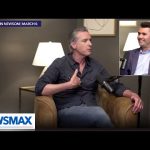The Federal Reserve quietly announced its second interest-rate cut of 2025, trimming the federal funds rate by a quarter point to a range of 3.75 to 4.00 percent — a move that will be sold as “helping Americans” but really rewards Wall Street and borrowers while punishing savers. This pivot marks a clear shift from the Fed’s hard-line stance of the past year and it should make every working American question whose interests this unelected institution really serves.
Behind the polite economic jargon is a troubling reality: the Fed made this decision with crucial pieces of official data missing because of the ongoing federal government shutdown, leaving policymakers to guess at the state of the economy. When central bankers are flying blind and still willing to ease, ordinary citizens should be alarmed — uncertainty favors the powerful, not the hardworking taxpayer who relies on predictable markets.
The Fed didn’t even speak with one voice — two members dissented, one wanting a bigger half-point cut and another arguing for no change, while Chair Jerome Powell cautioned that further cuts are “far from” guaranteed as the committee wrestles with conflicting signals. That level of internal disagreement reveals that the rate cuts are as much political theater as they are sound policy, and it underscores how erratic monetary policy has become under a central bank that seems increasingly reactive.
Meanwhile, the Fed quietly announced it will cease reducing its securities holdings beginning December 1, effectively pausing the runoff of the balance sheet and leaving markets with an implicit backstop. This is not neutral technocracy — it is active intervention that props up asset prices and benefits big institutions that have deep pockets, while the small investor sees their savings erode in real terms.
Inflation remains stubbornly above the Fed’s stated 2 percent target in many measures, meaning these rate cuts risk reigniting price pressures and making life costlier for families already stretched thin. Lower headline rates might buoy stocks for a few days, but if prices keep drifting up, the people who lose are those on fixed incomes and those saving for retirement — the very people conservative leaders claim to protect.
This is a moment for clear thinking and political accountability. Americans should demand transparency from the Federal Reserve, insist on a plan that prioritizes price stability over market froth, and support leaders who will restore fiscal sanity in Washington so the central bank is not forced to paper over policy failures. Our families deserve sound money, not the next round of quick fixes that reward elites and leave the hardworking majority holding the bill.




